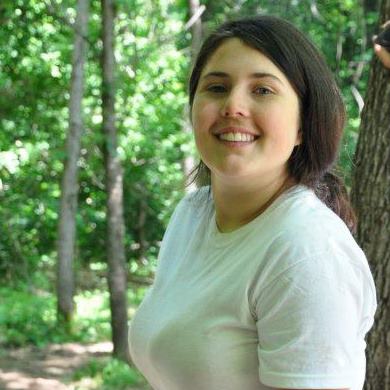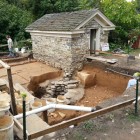My name is Gabrielle Vielhauer. I am a student at Bloomsburg University of Pennsylvania where I am studying anthropology. From September to December 2012, I was pleased to be selected to participate in The Harrisburg Intern Semester (THIS) program sponsored by the Pennsylvania State System of Higher Education (PASSHE). This program places one student representative from each university, within the state system, with an office of the legislature or in a government agency.
For my internship, I was placed in the Pennsylvania Historic Preservation Office (PA HPO) which also serves as the State Historic Preservation Office. During my internship, I worked with the staff members of the Cultural Resource Geographic Information System (CRGIS) for roughly 37 hours per week. Before working in CRGIS, I will admit that the historical markers program and the State Museum were the only things I knew about in regards to Historic Preservation in Pennsylvania. Working with the CRGIS, I quickly realized how much the PA HPO does on a daily basis to research, understand and protect significant historical and archaeological resources in the Commonwealth.
The internship also allowed me the freedom to explore the various roles and responsibilities of the PA HPO. For example, I was lucky enough to accompany one staff member on several field views with fellow archaeologists and geomorphologists. I was even able to assist with the excavations at Fort Hunter, a French and Indian War site.
The specific project I worked on involved the archaeological resources of the Allegheny National Forest (ANF). The archaeological staff of the ANF has recorded an abundance of sites within the forest. Due to various reasons, these sites were never documented and mapped in the CRGIS system. My task was to begin the process of deciphering which resources met official state site requirements and handling those sites properly. As the project progressed, it became increasingly apparent that it will take the work of several individuals to finish organizing this data. To ensure that sites are handled consistently throughout the process, I developed a protocol that explains specifically the process for handling and documenting the data from the ANF in a manner that is mutually beneficial to both agencies. Working on this particular project also allowed me to learn more about federal regulations that protect archaeological and historical resources at both state and national levels.
They say that a person learns the most about speaking and understanding a language by being immersed in a culture that speaks the language. This same idea accurately describes the experience I had at the Bureau for Historic Preservation. Applying my knowledge and skills to real archaeological sites in Pennsylvania taught me so much about archaeology in a practical, real-life sense. This internship was enriching in many more ways than what has been briefly described, but all of the ways have made me a more professional archaeologist.
For other internship possibilities please visit the PHMC’s Intern website. Keystone internship applications are due by Feb 15th 2013.




Leave a Reply